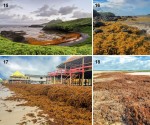
Tuesday, May 2nd, 2017
The Atlantic Ocean’s Sargasso Sea is named for its floating masses of Sargassum algae that are essential to local marine life. However, these drifting “islands” may be shifting to new areas on both sides of the tropical Atlantic Ocean. If they reach land, the massive algal blooms can affect local fisheries and tourism. The authors

Tuesday, April 11th, 2017
Earth’s magnetic field is like a huge cocoon, protecting the planet from cosmic radiation and charged particles found in solar wind. European Space Agency (ESA) Swarm satellites are recording details about one of the most difficult to observe layers of Earth’s magnetic field—as well as the magnetic history imprinted on Earth’s crust. Most of Earth’s

Monday, April 3rd, 2017
The CanX-7 nanosatellite built by Space Flight Laboratory (SFL) at the University of Toronto Institute for Aerospace Studies validated real-time detection and tracking of aircraft by a satellite in low-Earth orbit. The next mission phase will begin in early May 2017 with deployment of drag sails developed by SFL to accelerate the deorbiting of small
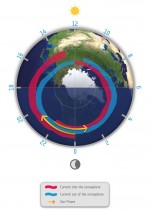
Tuesday, March 28th, 2017
Information from the European Space Agency (ESA) magnetic field Swarm mission led to the discovery of supersonic plasma jets high up in Earth’s atmosphere that can push temperatures up to almost 10,000 degrees Celsius. Presenting these findings at the Swarm Science Meeting in Canada, scientists from the University of Calgary explained how they used measurements
Tuesday, March 14th, 2017
Detecting and predicting lightning just got a lot easier. The first images from a new instrument onboard NOAA’s GOES-16 satellite are giving NOAA National Weather Service forecasters richer information about lightning that will help them alert the public to dangerous weather. The first lightning detector in a geostationary orbit, the Geostationary Lightning Mapper (GLM), is
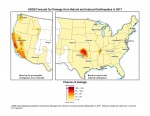
Tuesday, March 7th, 2017
New U.S. Geological Survey (USGS) maps identify potential ground-shaking hazards in 2017 from human-induced and natural earthquakes in the central and eastern United States (CEUS). This is the second consecutive year both types of hazards are forecasted, as previous USGS maps only identified hazards from natural earthquakes. This research recently was published in Seismological Research
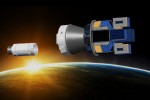
Tuesday, February 28th, 2017
In the second half of 2018, the European Space Agency (ESA) Vega small launcher is set to demonstrate its extended capability to deploy multiple light satellites using its new versatile Small Satellites Mission Service (SSMS) dispenser. This demonstration provides the first of the launch opportunities under the new Light satellite, Low-cost Launch opportunity (LLLor L3)

Tuesday, February 21st, 2017
The emerald golfing greens have seen better days. According to the U.S. National Golf Foundation, the number of players has steadily declined from over 30 million in 2005 (pre-recession) to 24.7 million today; 680 US and 158 Canadian courses have closed. “Golf course owners are working smarter to manage resources like water and labor more
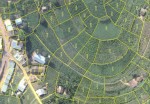
Monday, February 6th, 2017
After Rwanda made waves in early 2016 for allegedly being the first country to approve drone delivery, people payed attention. The country, with its rolling hills and one of the fastest-growing economies in Central Africa, now has established regulations regarding drones and has become a vanguard of sorts for the region. “My impression is that
Wednesday, February 1st, 2017
More accurate, immediate and economical information on severe weather phenomena such as hurricanes soon could be available thanks to the Weather Hazard Alert and Awareness Technology Radiation Radiosonde (WHAATRR) Glider. According to project manager Scott Wiley, the vehicle could potentially save the National Weather Service up to $15 million a year compared to current methods.